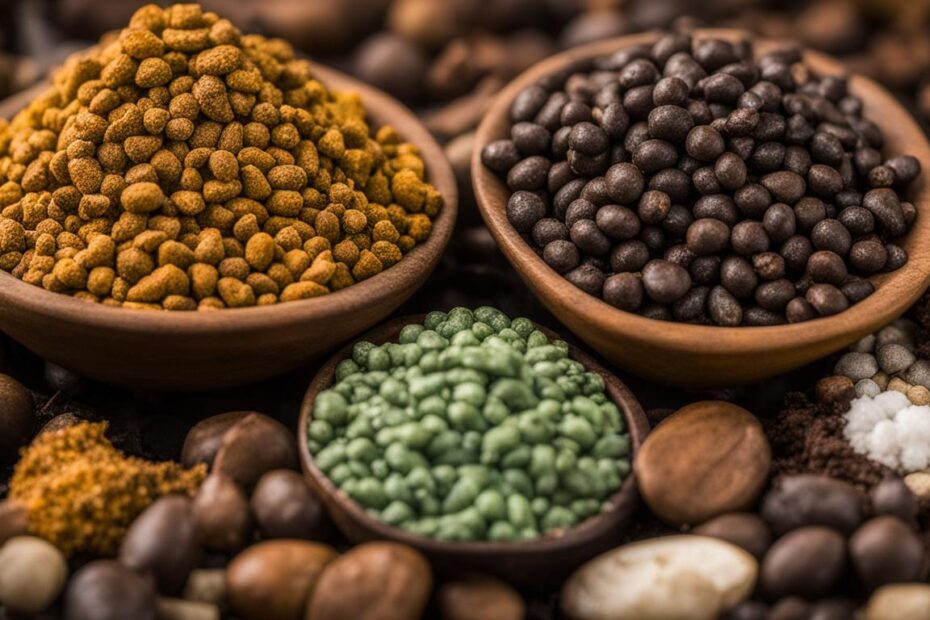When it comes to identifying animal droppings, it’s important to know the differences between deer droppings and rabbit droppings. While they may look similar at first glance, there are key characteristics that can help you distinguish between the two. By examining factors such as size, shape, color, texture, and diet, you can easily identify whether the droppings are from a deer or a rabbit.
Key Takeaways:
- Deer droppings are larger in size compared to rabbit droppings.
- The color of deer droppings is usually black or dark brown, while rabbit droppings are light brown to dark brown.
- Deer droppings have an oval or cylindrical shape, while rabbit droppings are round or spherical.
- The texture of deer droppings is smooth and slightly moist, whereas rabbit droppings are hard and dry.
- Deer droppings indicate a diet of plant matter, while it’s difficult to discern the rabbit’s diet from its droppings.
Size Comparison: Deer Droppings vs Rabbit Droppings
When it comes to identifying animal droppings, size can be a crucial factor. In the case of deer droppings and rabbit droppings, there is a noticeable difference in size. Deer droppings are generally larger compared to rabbit droppings.
Deer droppings can measure around 1/2 to 5/8 inches long, while rabbit droppings are typically about 1/4 to 3/8 inches in diameter.
| Deer Droppings | Rabbit Droppings | |
|---|---|---|
| Size | 1/2 to 5/8 inches long | 1/4 to 3/8 inches in diameter |
The size of the droppings can vary depending on the size of the animal and its diet. Larger animals like deer tend to produce larger droppings compared to smaller animals like rabbits.
By taking note of the size difference, you can easily distinguish between deer droppings and rabbit droppings, providing a valuable clue in the identification process.
Color Variation: Deer Droppings vs Rabbit Droppings
One of the key differences between deer droppings and rabbit droppings is the color. Deer droppings are usually black or dark brown in color, while rabbit droppings range from light brown to dark brown.
The color of the droppings can be influenced by the animals’ diet. If a deer has been consuming more plant matter, such as grass or leaves, their droppings may appear darker. On the other hand, rabbit droppings can darken if the rabbit has been feasting on dark berries.
It’s important to note that the color of the droppings alone may not be sufficient to determine which animal they came from. However, when combined with other characteristics like size, shape, and texture, the color can help confirm the identification.
To summarize, deer droppings are usually black or dark brown, while rabbit droppings are light brown to dark brown. The color can be influenced by the animals’ diet, but it’s just one of several factors to consider when differentiating between the two.
| Deer Droppings | Rabbit Droppings | |
|---|---|---|
| Color | Black or dark brown | Light brown to dark brown |
| Size | 1/2 to 5/8 inches long | 1/4 to 3/8 inches in diameter |
| Shape | Oval or cylindrical | Round or spherical |
| Texture | Smooth and slightly moist when fresh | Hard and dry, resembling small pebbles |
| Diet Indication | Plant matter like grass, leaves, or corn | Difficult to discern specific details |
Shape Differences: Deer Droppings vs Rabbit Droppings
When examining deer droppings and rabbit droppings, one of the key factors to consider is their shape. Deer droppings typically have an oval or cylindrical shape, resembling small pellets. They are often found in clusters, as deer tend to defecate in a concentrated area. On the other hand, rabbit droppings have a round or spherical shape and are usually found scattered around their feeding grounds.
The shape of the droppings can provide valuable insights into the habits of these animals. The clustered nature of deer droppings is a result of their territorial behavior, as they mark their territory by depositing droppings in specific locations. Rabbit droppings, on the other hand, are scattered as the animals move and feed in various areas. This distinction in shape can be a useful indicator when differentiating between deer and rabbit droppings.
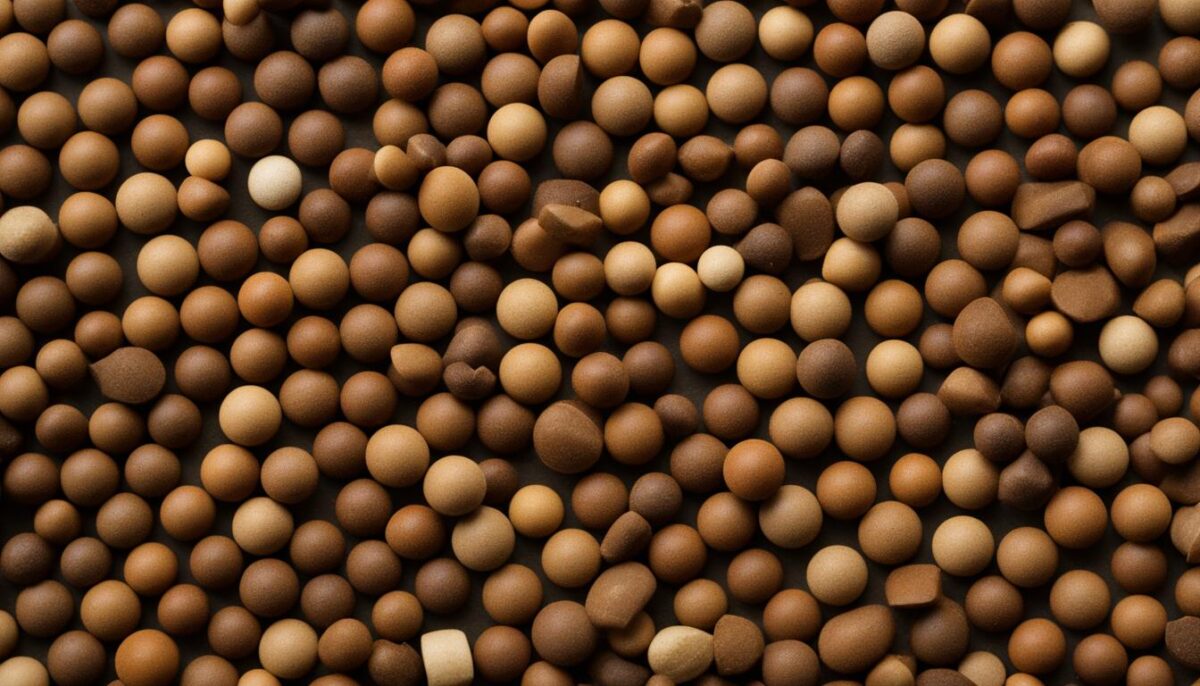
Table: Shape Comparison of Deer Droppings and Rabbit Droppings
| Aspect | Deer Droppings | Rabbit Droppings |
|---|---|---|
| Shape | Oval or cylindrical | Round or spherical |
| Clustering | Often found in clusters | Scattered around feeding areas |
This table summarizes the shape differences between deer droppings and rabbit droppings. It is important to consider the shape when identifying the origin of the droppings, as it can help you determine whether deer or rabbits have been present in a particular area. By closely examining the shape and distribution of the droppings, you can gain valuable insights into the behavior and presence of these animals in their habitats.
Texture Variation: Deer Droppings vs Rabbit Droppings
Another distinguishing characteristic between deer droppings and rabbit droppings is the texture. When examining the texture of the droppings, you can easily differentiate between the two animals.
Deer droppings have a smooth texture and are slightly moist when fresh. They appear more compact and cohesive compared to rabbit droppings. On the other hand, rabbit droppings have a hard and dry texture, resembling small pebbles. The dry nature of rabbit droppings is due to the rabbit’s efficient digestive system, which breaks down food more effectively.
The difference in texture can be a useful clue in identifying whether the droppings belong to a deer or a rabbit. By closely examining the texture and consistency of the droppings, you can gain valuable insights into the animal’s digestive processes and help determine the presence of either deer or rabbits in a particular area.
Comparison of Texture: Deer Droppings vs Rabbit Droppings
To further illustrate the texture variation between deer droppings and rabbit droppings, the following table provides a comprehensive comparison:
| Characteristic | Deer Droppings | Rabbit Droppings |
|---|---|---|
| Texture | Smooth and slightly moist | Hard and dry, resembling small pebbles |
| Consistency | Compact and cohesive | Loose and separate |
| Appearance | More rounded and oval-shaped | Round and spherical |
As observed from the comparison table, the texture of deer droppings differs significantly from that of rabbit droppings. Understanding these variations can help you accurately identify the animals present in a specific area based on their droppings.
Frequency of Defecation: Deer Droppings vs Rabbit Droppings
Understanding the frequency of defecation can provide valuable insights into differentiating between deer droppings and rabbit droppings. Deer typically defecate several times a day, while rabbits defecate numerous times throughout the day, often wherever they are feeding.
Deer: Deer have specific spots where they prefer to leave their droppings, known as “deer scat stations.” These scat stations are frequently visited, and you may find multiple droppings clustered together in these areas. By observing the presence of scat stations and the regularity of droppings, you can determine the presence of deer in an area.
Rabbits: On the other hand, rabbits defecate while they are feeding, and their droppings are often scattered randomly. As they move around and graze, rabbits leave small, individual droppings along their path. The scattered appearance and the high frequency of defecation can be indicative of rabbit activity in a particular location.
Frequency of Defecation Comparison
To further highlight the differences in the frequency of defecation between deer and rabbits, let’s summarize the key points in a table:
| Aspect | Deer Droppings | Rabbit Droppings |
|---|---|---|
| Frequency | Several times a day | Multiple times throughout the day |
| Scattering | Clustered in specific areas | Scattered randomly |
| Presence | Deer scat stations | Individual droppings while feeding |
By considering the frequency of defecation and the characteristics of the droppings, you can determine whether deer or rabbits have been present in a particular area.
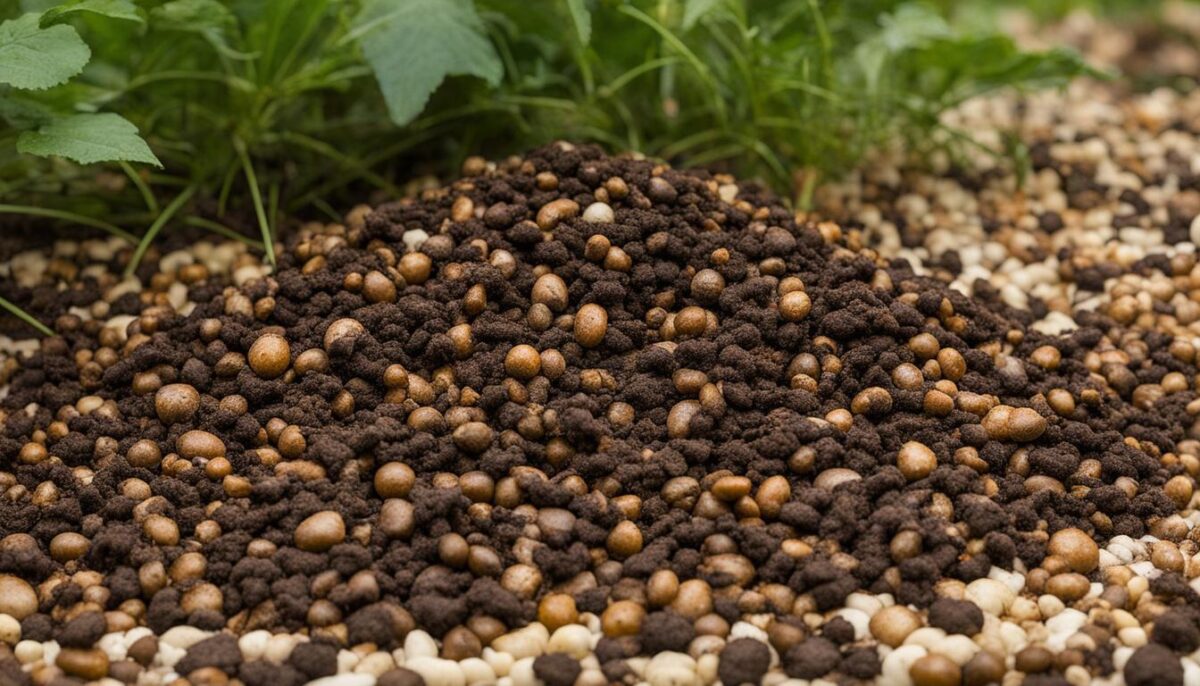
Diet Indication: Deer Droppings vs Rabbit Droppings
One of the key differences between deer droppings and rabbit droppings is the indication of their respective diets. Deer droppings often contain visible traces of the animals’ plant-based diet. You may find fragments of grass, leaves, or even corn in their droppings. This is because deer primarily feed on vegetation and forage on plants in their natural habitat.
In contrast, determining the diet of rabbits based on their droppings is more challenging. Rabbit droppings do not provide clear indications of what the animal has been eating. Unlike deer, rabbits have a more varied diet that includes not only vegetation but also stems, twigs, and even the bark of small trees. However, this diversity in their diet does not leave behind obvious clues in their droppings.
It is essential to note that while the presence of plant matter in droppings suggests deer activity in the area, the absence of such indications does not necessarily mean that deer are not present. Similarly, the lack of distinct dietary clues in rabbit droppings does not mean that rabbits are not nearby. Other factors, such as the availability of food sources and environmental conditions, also play a significant role in determining the presence of deer or rabbits in a specific area.
| Diet Indication | |
|---|---|
| Deer Droppings | Contains visible traces of vegetation, such as grass, leaves, and corn. |
| Rabbit Droppings | Do not provide clear indications of the animal’s diet; may consist of a variety of plant material and woody stems. |
Mistaking One for the Other
It is not uncommon to mistake deer droppings for rabbit droppings or vice versa, especially when observing from a distance. Both types of droppings share similar characteristics such as size, color, and shape, making it challenging to differentiate between the two at first glance. However, by closely examining the texture and inspecting the droppings, you can determine if it is from a deer or a rabbit.
Deer droppings are larger compared to rabbit droppings, typically measuring around 1/2 to 5/8 inches in length. On the other hand, rabbit droppings are smaller, usually about 1/4 to 3/8 inches in diameter. Size can play a crucial role in distinguishing between the two, so be sure to take note of the dimensions of the droppings.
Another important factor to consider is the texture of the droppings. Deer droppings have a smooth texture and can be slightly moist when fresh. In contrast, rabbit droppings are hard and dry, resembling small pebbles. The difference in texture is a result of the animals’ digestive systems, with deer having a stronger digestive system that breaks down food more effectively.
| Characteristics | Deer Droppings | Rabbit Droppings |
|---|---|---|
| Size | Larger (around 1/2 to 5/8 inches in length) | Smaller (about 1/4 to 3/8 inches in diameter) |
| Texture | Smooth and slightly moist when fresh | Hard and dry, resembling small pebbles |
To avoid mistaking deer droppings for rabbit droppings or vice versa, it is essential to closely examine these key characteristics. Remember that these droppings can provide valuable insights into the presence of deer or rabbits in an area, enabling hunters, property owners, and nature enthusiasts to better understand the wildlife around them.
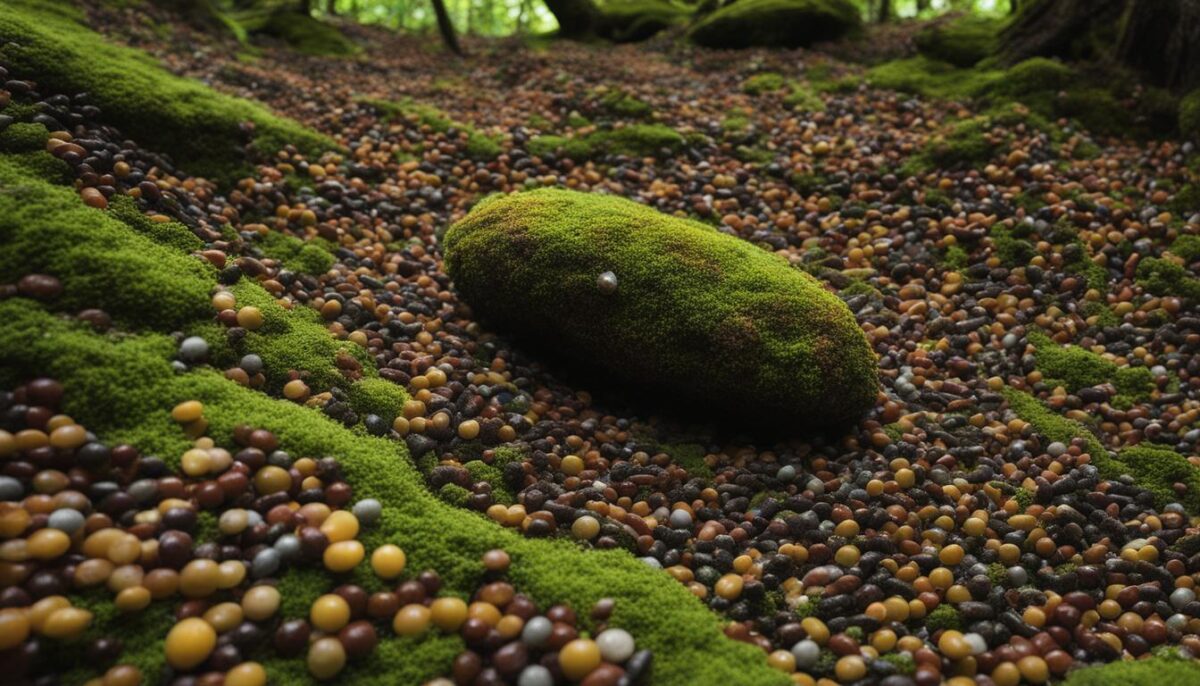
Other Animal Droppings Comparison
While deer droppings and rabbit droppings may often be mistaken for one another, it is important to consider that there are other animals with similar-looking droppings. Understanding the differences between these droppings can help you accurately identify the presence of specific animals in your surroundings.
Squirrel Droppings
Squirrel droppings are smaller and elongated, resembling rat or mouse droppings. They are typically around 1/4 inch in length and have a cylindrical shape. Squirrel droppings are known for being relatively uniform in size and are commonly found in piles or scattered along their active paths. If you notice small elongated droppings in your garden or outdoor spaces, it is likely that squirrels have been nearby.
Other Animal Droppings
Aside from deer and rabbits, other animals that may leave droppings in similar shapes and sizes include raccoons, skunks, and turkeys. Raccoon droppings are similar in appearance to dog droppings but are often found in larger quantities. Skunk droppings are similar in size to cat droppings and tend to have a strong odor. Turkey droppings are large and cylindrical, similar to deer droppings, but tend to be more clustered together.
Identifying Animal Droppings
When trying to identify animal droppings, it is essential to consider the size, shape, and texture of the droppings, as well as the specific habits and behaviors of different animals. Online resources and field guides can provide visual references and detailed descriptions to help you differentiate between various animal droppings.
| Animal | Droppings Size | Droppings Shape | Droppings Clustering | Additional Things to Consider |
|---|---|---|---|---|
| Squirrel | Approximately 1/4 inch | Elongated and cylindrical | Piles or scattered along active paths | Rat or mouse-like appearance |
| Raccoon | Varies, but usually larger than squirrel droppings | Similar to dog droppings | Commonly found in larger quantities | Consider other signs of raccoon activity, such as tracks or damage to trash cans |
| Skunk | Similar in size to cat droppings | Varies, but usually cylindrical | May be found in piles or scattered | Strong odor |
| Turkey | Similar to deer droppings in size | Cylindrical | Tend to be clustered together | Consider other signs of turkey activity, such as tracks or vocalizations |
By familiarizing yourself with the characteristics of different animal droppings, you can gain a better understanding of the wildlife present in your area. While it may take some practice, correctly identifying animal droppings can provide valuable insights into local ecosystems and help you take appropriate measures for wildlife management.
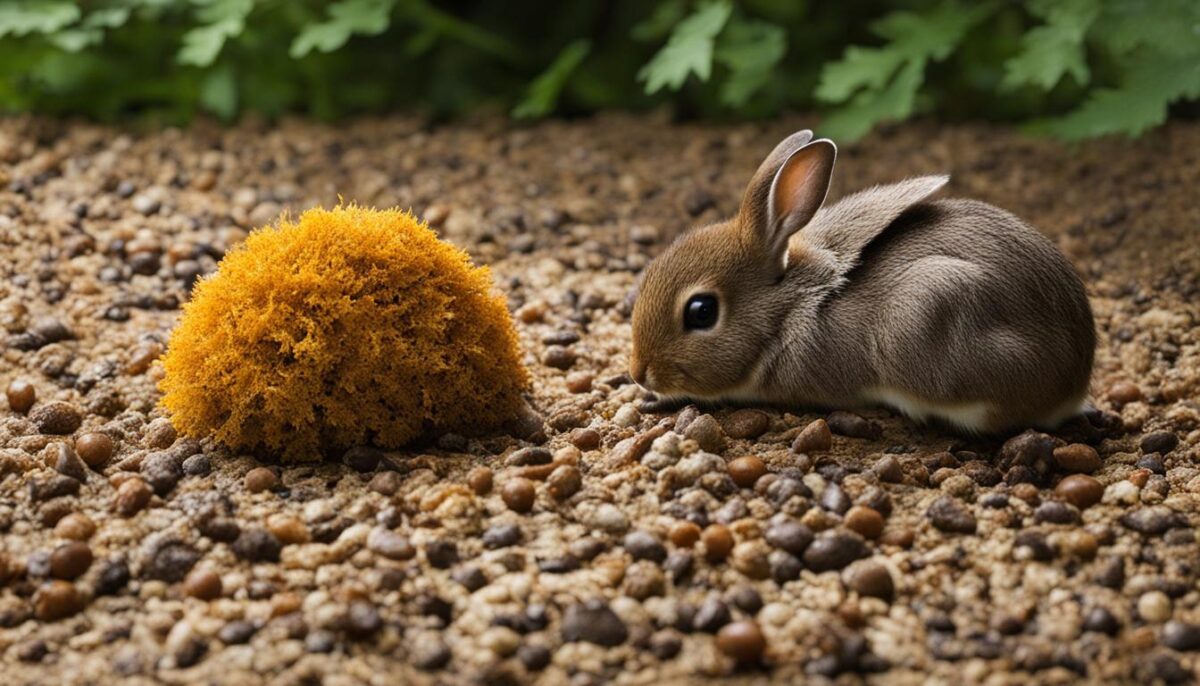
Conclusion
Understanding the differences between deer droppings and rabbit droppings is essential for hunters, property owners, and nature enthusiasts. By examining the size, shape, color, texture, and diet indication of the droppings, you can easily identify which animal has been in the area.
Deer droppings are larger in size compared to rabbit droppings, while rabbit droppings are round or spherical in shape. The color of deer droppings is usually black or dark brown, while rabbit droppings are light brown to dark brown. The texture of deer droppings is smooth and slightly moist, whereas rabbit droppings are hard and dry.
The diet of the animals can also provide clues. Deer droppings often contain plant matter, such as grass, leaves, or corn, whereas rabbit droppings do not provide clear indications of what the animal has been eating.
By understanding these distinguishing characteristics, you can avoid mistaking one for the other. Remember to consider the size, color, shape, texture, and diet indication when differentiating between deer and rabbit droppings.
FAQ
Can deer droppings and rabbit droppings look similar?
Yes, they can sometimes look similar, but there are key characteristics that can help differentiate between the two.
How can I differentiate between deer droppings and rabbit droppings?
By examining the size, shape, color, texture, and diet of the droppings, you can easily identify whether it is from a deer or a rabbit.
What is the size difference between deer droppings and rabbit droppings?
Deer droppings are larger, typically around 1/2 to 5/8 inches long, while rabbit droppings are about 1/4 to 3/8 inches in diameter.
How can I distinguish the color of deer droppings from rabbit droppings?
Deer droppings are usually black or dark brown, while rabbit droppings are light brown to dark brown.
What are the differences in shape between deer droppings and rabbit droppings?
Deer droppings have an oval or cylindrical shape and can be clustered together, while rabbit droppings are round or spherical and are usually separate.
What is the texture difference between deer droppings and rabbit droppings?
Deer droppings have a smooth texture and can be slightly moist when fresh, while rabbit droppings are hard, dry, and resemble small pebbles.
How often do deer and rabbits defecate?
Deer typically defecate several times a day in the same area, while rabbits defecate numerous times a day and often wherever they are feeding.
Do deer droppings and rabbit droppings provide indications of their diet?
Yes, deer droppings may contain plant matter such as grass, leaves, or corn, while rabbit droppings do not provide clear indications of their diet.
Can deer droppings be mistaken for rabbit droppings and vice versa?
Yes, it is possible to mistake the two, especially from a distance, but by closely examining the texture and inspecting the droppings, you can determine if it is from a deer or a rabbit.
What are some other animal droppings that can be mistaken for deer or rabbit droppings?
Squirrel droppings, which are smaller and elongated, can resemble deer or rabbit droppings, but each animal has its own distinctive droppings.


